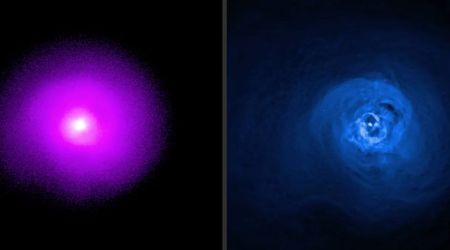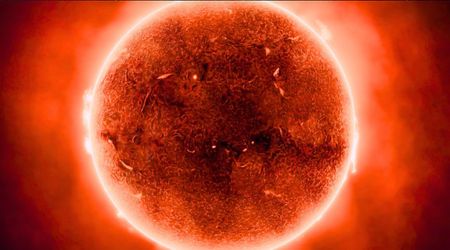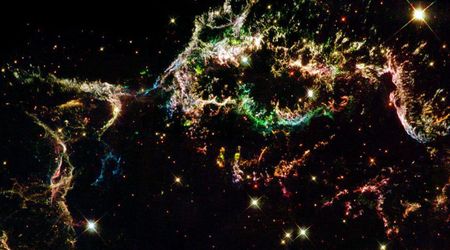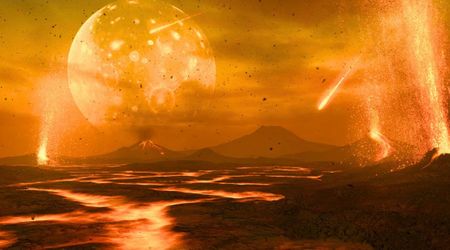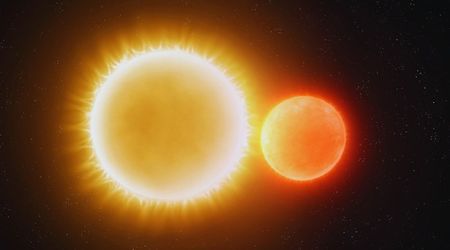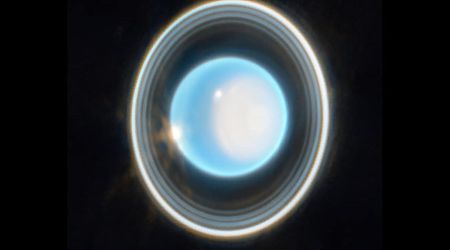New research reveals how galaxies fueled the Cosmic Noon's explosive star formation

New research is shedding light on a pivotal period in the universe's history known as "Cosmic Noon," a time 10 to 12 billion years ago when star formation was 10 to 100 times more intense than it is today. This era was crucial for galaxy development, as vast amounts of gas were rapidly converted into stars, as per Universe Today.

Scientists are now focusing on a specific type of ancient galaxy called Lyman Alpha Emitters (LAEs), which appear to have experienced their first powerful bursts of star formation during Cosmic Noon. The presence of the Lyman Alpha (Lyα) emission line, a signature of intense ultraviolet radiation from young, hot stars that ionize hydrogen, indicates active star formation. As the hydrogen recombines, it projects the distinctive Lyα line.

These LAEs are relatively low in mass and remarkably young, with estimated ages between 200 and 600 million years. They exhibit some of the highest star formation rates observed among galaxies, leading researchers to believe they may be the progenitors of galaxies like our own Milky Way. Despite their potential significance, LAEs present several puzzles, including the possibility that they are even brighter than currently observed. Unraveling the mysteries of these early galaxies could provide crucial insights into the evolution of galaxies throughout the cosmos.

The latest findings come from a study titled "ODIN: Star Formation Histories Reveal Formative Starbursts Experienced by Lyα-emitting Galaxies at Cosmic Noon," published in The Astrophysical Journal Letters. Nicole Firestone, an NSF graduate student in the Department of Physics and Astronomy at Rutgers University, served as the lead author. She describes LAEs as "the most profound beacons of the high-redshift Universe." She further explains that LAEs shine exceptionally bright due to their low dust content along the lines of sight and their high star formation rates. "Because of this feature," she notes, "LAEs are relatively easily detectable from the ground, which makes them absolutely fantastic probes of distant galaxy populations."
Understanding LAEs is critical for comprehending how galaxies evolve. Astronomers have long debated whether these galaxies are young, experiencing their initial burst of star formation, or older systems reigniting star formation after a period of dormancy. The "ODIN" in the study's title refers to the One-hundred-deg^2 DECam Imaging in Narrowbands survey, an ongoing initiative that has, to date, identified 74 LAEs, promising more revelations about these crucial early galaxies.

The research team employed machine learning to analyze the light from the 74 LAEs, allowing them to determine their star formation rates (SFRs) over time and trace the individual histories of each galaxy. In their paper, the authors explain that "LAE SFHs can be characterized by three archetypes: first burst at the time of observation, dominant burst showing the highest SFR at the time of observation but with at least one significant star formation episode in the past, and nondominant burst describing the case where the highest SFR occurred in the past," This work directly tested the long-held assumption that LAEs, due to their brightness, are undergoing their very first major star-forming episode when observed, as mentioned by the outlet.

Astronomers are intensely focused on unraveling the Milky Way's history, an interest that has surged following the James Webb Space Telescope's surprising discovery of massive and well-structured spiral galaxies in the early universe. The JWST has ignited a new wave of excitement in the field of galaxy formation and evolution.
If LAEs are confirmed to be the direct precursors to galaxies like our own, this new research will significantly fuel the ongoing quest to understand the Milky Way's lineage. Eric Gawiser, also from the Department od Physics and Astronomy at Rutgers and leader of the research team, expresses the significance of their findings: “Until now, it remained an open question whether we had looked far enough back in time to find the starting points for the Milky Way and galaxies like it.” He confidently adds, “Now we know the answer to that question is ‘Yes!’”
